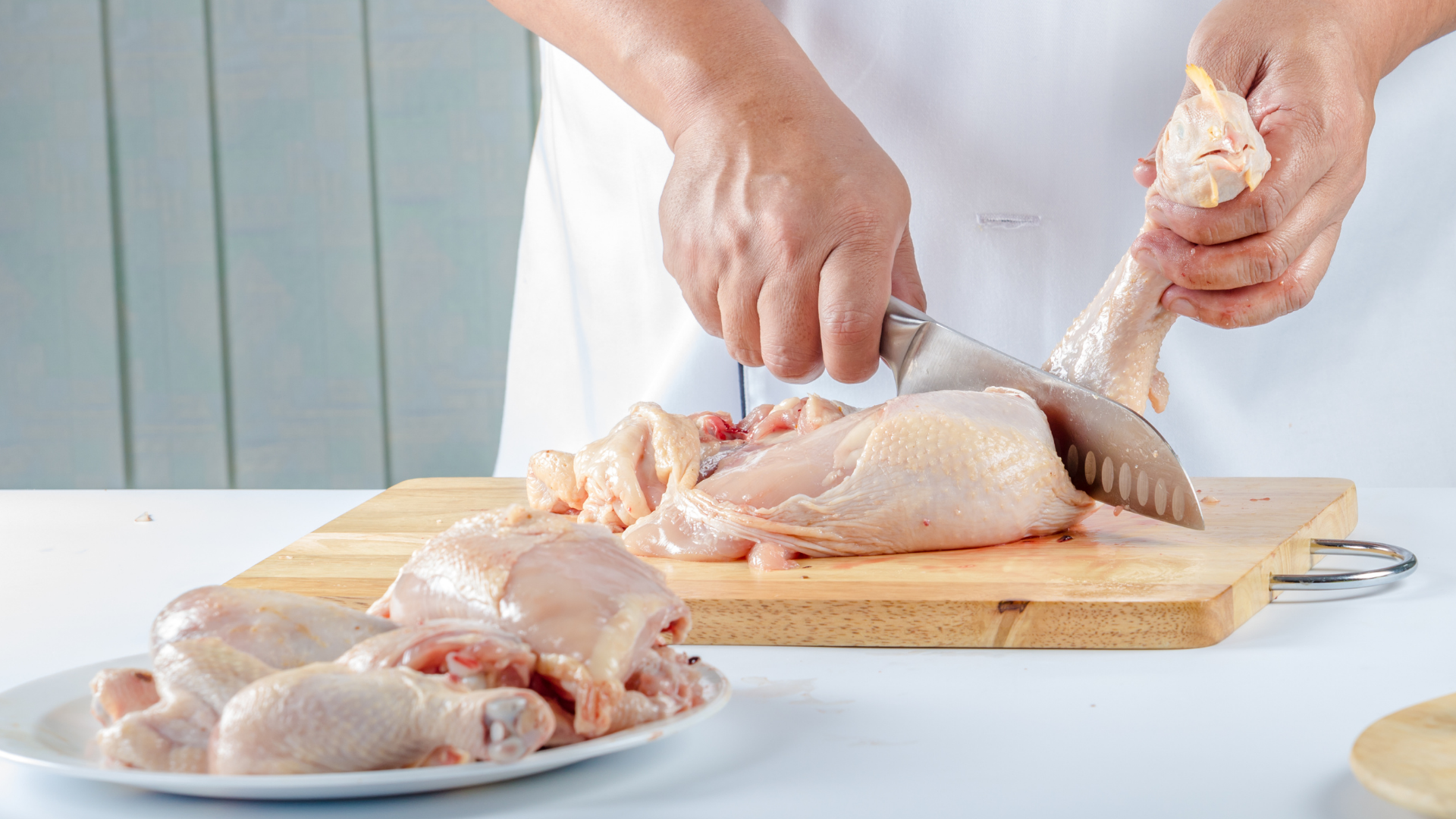Handling Raw Chicken Safely
go.ncsu.edu/readext?791608
en Español / em Português
El inglés es el idioma de control de esta página. En la medida en que haya algún conflicto entre la traducción al inglés y la traducción, el inglés prevalece.
Al hacer clic en el enlace de traducción se activa un servicio de traducción gratuito para convertir la página al español. Al igual que con cualquier traducción por Internet, la conversión no es sensible al contexto y puede que no traduzca el texto en su significado original. NC State Extension no garantiza la exactitud del texto traducido. Por favor, tenga en cuenta que algunas aplicaciones y/o servicios pueden no funcionar como se espera cuando se traducen.
Português
Inglês é o idioma de controle desta página. Na medida que haja algum conflito entre o texto original em Inglês e a tradução, o Inglês prevalece.
Ao clicar no link de tradução, um serviço gratuito de tradução será ativado para converter a página para o Português. Como em qualquer tradução pela internet, a conversão não é sensivel ao contexto e pode não ocorrer a tradução para o significado orginal. O serviço de Extensão da Carolina do Norte (NC State Extension) não garante a exatidão do texto traduzido. Por favor, observe que algumas funções ou serviços podem não funcionar como esperado após a tradução.
English
English is the controlling language of this page. To the extent there is any conflict between the English text and the translation, English controls.
Clicking on the translation link activates a free translation service to convert the page to Spanish. As with any Internet translation, the conversion is not context-sensitive and may not translate the text to its original meaning. NC State Extension does not guarantee the accuracy of the translated text. Please note that some applications and/or services may not function as expected when translated.
Collapse ▲Chicken is a versatile and affordable source of lean protein, making it very popular among both beginner and advanced cooks alike. It’s important, however, to know and mitigate the risks associated with handling raw chicken and make sure your kitchen is staying clean and safe!
The Centers for Disease Control (CDC) estimates that about a million people get sick from contaminated raw poultry each year. While chicken is a common and nutritious protein source for Americans, it is commonly associated with campylobacter (found on close to half of commercially available chicken), salmonella, and clostridium perfringens bacteria. Infections from these bacteria can cause a wealth of gastrointestinal problems (diarrhea, vomiting, and abdominal cramps), especially for those with compromised immune systems, including young, elderly, and pregnant people. While there is risk involved with handling raw poultry in the kitchen, there are several precautions you can take to significantly reduce that risk and give you a better chance of protecting yourself and your family from food-borne illness.
If chicken is on your menu, use these tips to reduce the risk of foodborne illness in your home:
- Place chicken in a disposable plastic bag before placing it in your cart or refrigerator to prevent raw juices from contaminating other foods.
- Use a food thermometer to ensure poultry reaches a proper internal cooking temperature of 165°F. This is the only way to ensure the chicken has reached a safe doneness. The color of the juices can’t tell you this!
- Wash hands with warm water and soap for at least 20 seconds after handling raw poultry and use a one-use towel to dry.
- Use a separate cutting board for raw chicken.
- Sanitize cutting boards, utensils, dishes, and countertops after preparing raw chicken.
- Store raw poultry in the bottom of your refrigerator to prevent raw juices from dripping onto other foods.
- Don’t wash your chicken! Washing your chicken prior to cooking is more likely to spread harmful germs around the kitchen than get rid of them, which may, in turn, increase the risk for foodborne illness.





